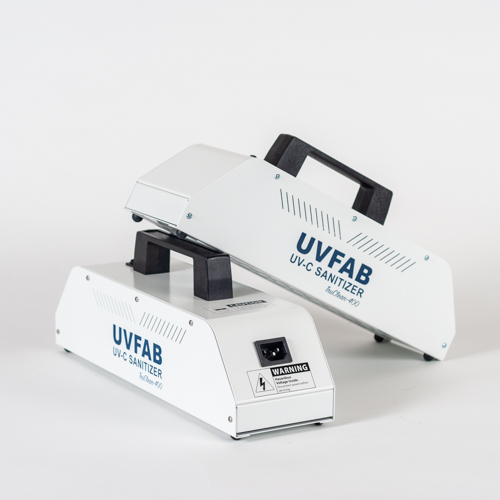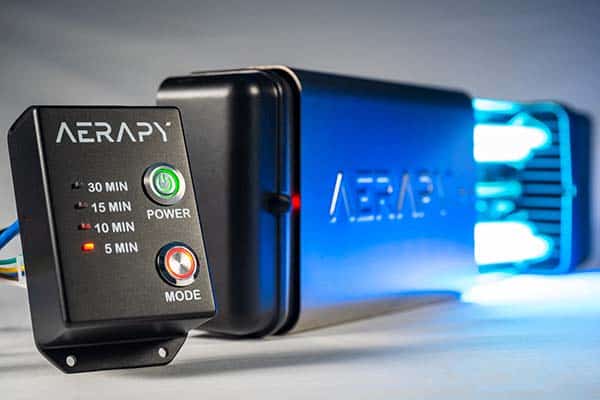UV Surface Disinfection Techniques: Optimizing Performance for Germ-Free Spaces
UV Surface Disinfection Techniques: Optimizing Performance for Germ-Free Spaces
Blog Article
Revealing the Conveniences of UV Disinfection: Ensuring Clean and Disinfected Rooms
While conventional cleaning methods have long been depended upon, innovations in modern technology have actually presented an ingenious option that makes sure tidy and sterilized spaces: UV disinfection. In addition, we will delve right into the safety and security factors to consider that need to be taken right into account when executing UV sanitation. Prepare to reveal a new dimension of sanitation and discover the untapped capacity of UV disinfection.

The Science Behind UV Disinfection
UV sanitation is a scientifically tested technique that makes use of ultraviolet light to get rid of hazardous bacteria from surface areas and water. The scientific research behind UV disinfection lies in the capability of UV-C light to harm the DNA and RNA of microbes, rendering them not able to replicate and creating their ultimate death. UV-C light drops within the wavelength series of 200 to 280 nanometers, which is highly effective in destroying germs, infections, and various other pathogens.
When exposed to UV-C light, the genetic material of microorganisms takes in the energy from the light, causing the development of thymine dimers. These dimers interfere with the regular duplication and transcription procedures of the microbes, hindering their capacity to survive and recreate (uv surface disinfection). The DNA and RNA damage caused by UV-C light is deadly to the bacteria, making UV sanitation a reliable and reliable approach for eliminating a variety of pathogens
UV sanitation is specifically beneficial in settings where typical chemical anti-bacterials might be inefficient or impractical. It is a non-chemical method that does not leave any residues or damaging by-products, making it secure for usage in food processing, healthcare centers, water therapy plants, and various other industries. In addition, UV sanitation is ecologically friendly, as it does not add to the advancement of antibiotic-resistant bacteria or various other unsafe pollutants.
Efficiency of UV Sanitation on Microorganisms
The performance of UV disinfection in eliminating virus has been extensively examined and proven in many scientific researches. UV radiation has the capability to suspend a large range of bacteria, consisting of microorganisms, fungi, and infections, by harming their DNA or RNA. This prevents them from duplicating and creating infections.
One study released in the American Journal of Infection Control located that UV disinfection worked in reducing the existence of numerous drug-resistant bacteria in health center rooms. One more research study performed by the National Institute for Occupational Safety and Health and wellness showed that UV sanitation was able to get rid of 99.9% of the flu virus on surfaces.
UV sanitation has actually also shown pledge in combating the spread of healthcare-associated infections (HAIs) According to a research study released in The Lancet, using UV-C light along with standard cleaning protocols substantially lowered the occurrence of HAIs in a medical facility setup.
Moreover, UV sanitation has actually verified to be reliable against emerging pathogens, such as the severe acute respiratory syndrome coronavirus 2 (SARS-CoV-2), which causes COVID-19. A research study carried out by the National Arising Contagious Illness Laboratories showed that UV-C light can inactivate the virus on surface areas within secs.
Applications of UV Disinfection in Different Setups
With its proven performance in eliminating microorganisms, UV disinfection has actually located applications in a variety of settings. One of one of the most usual locations where UV disinfection is used remains in medical care centers. UV modern technology is made use of to sanitize individual rooms, operating spaces, and other high-touch surfaces, reducing the threat of healthcare-associated infections. Additionally, UV disinfection is also being applied in food handling plants and dining establishments to guarantee the safety of foodstuff and stop the spread of foodborne health problems. UV sanitation is additionally valuable in water therapy plants, where it is used to eliminate dangerous microorganisms and supply risk-free drinking water.
An additional essential application of UV disinfection is in the air purification sector. UV air purifiers are made use of in domestic, business, and commercial setups to eliminate airborne microorganisms, viruses, and mold and mildew spores. This technology is specifically useful in settings where individuals are much more at risk to breathing infections, such as hospitals, institutions, and office complex.
Additionally, UV sanitation is progressively being made use of in public transport systems, such as trains and buses, to preserve clean and sterilized areas for guests. UV light is employed to disinfect surfaces and air inside the automobiles, lowering the risk of spreading contagious illness.
Benefits of UV Sanitation Over Traditional Approaches
In contrast to typical methods, UV disinfection supplies a variety of distinctive benefits that make it a more suitable option in different markets and setups. One substantial advantage is its efficiency versus a vast selection of microbes, consisting of fungi, bacteria, and viruses. Unlike chemical disinfectants that might have restricted efficiency versus particular microorganisms, UV sanitation is a non-selective you can try here process that can eliminate or inactivate a wide range of unsafe organisms.
One more benefit of UV sanitation is its capacity to give effective and fast disinfection. Typical sanitation approaches commonly need longer get in touch with times or multiple steps to accomplish the preferred level of sanitation. In comparison, UV light can offer immediate and continuous sanitation, lowering downtime and raising efficiency in various applications.
UV sanitation additionally provides a safe and ecologically pleasant choice to typical sanitation techniques. uv surface disinfection. Unlike chemical representatives, UV light does not leave any harmful deposits or by-products, making it ideal for use in delicate atmospheres such as food processing centers, healthcare setups, and water therapy plants
Additionally, UV sanitation is a cost-efficient option over time. While the in advance investment for UV sanitation systems may be greater than standard methods, the functional costs are normally lower. UV lights have a long life-span and need marginal maintenance, leading to lowered labor and substitute expenses.
Safety And Security Considerations for UV Sanitation
Considering the prospective hazards related to UV disinfection, it is vital to attend to the safety and security considerations associated with applying this technology. UV disinfection uses ultraviolet light to eliminate or inactivate microorganisms, making it an efficient technique for sterilizing various surface areas and objects. It is crucial to recognize that UV radiation can also position dangers to human health and wellness if correct safety and security actions are not followed.
First and foremost, straight exposure to UV radiation can create injury to the skin and eyes. Long term direct exposure can bring about sunburn, skin damages, and also an increased risk of developing skin cancer cells. Consequently, it is essential to guarantee that UV disinfection systems are appropriately confined and equipped with safety and security attributes such as automated shut-off systems or movement sensors to protect against accidental exposure.

In addition, appropriate training and education and learning are necessary for those in charge of operating UV sanitation systems. They should know the potential threats, understand the safety and security protocols, and recognize how go to this web-site to take care of and maintain the devices appropriately.
Conclusion
UV sanitation can be used in various settings, including healthcare facilities, food processing plants, and water treatment systems. Compared to conventional techniques, UV sanitation has advantages such as faster disinfection times, very little chemical usage, and no dangerous results.
UV sanitation is a medically tried and tested approach that makes use of ultraviolet light to remove unsafe microbes from surface areas and water. The DNA and RNA damages triggered by get redirected here UV-C light is deadly to the bacteria, making UV sanitation a trusted and reliable approach for eliminating a broad variety of microorganisms.
Another advantage of UV sanitation is its capacity to supply fast and effective sanitation. UV sanitation uses ultraviolet light to kill or suspend bacteria, making it an efficient technique for sanitizing various surface areas and items. Compared to traditional approaches, UV sanitation has advantages such as faster sanitation times, very little chemical usage, and no damaging byproducts.
Report this page